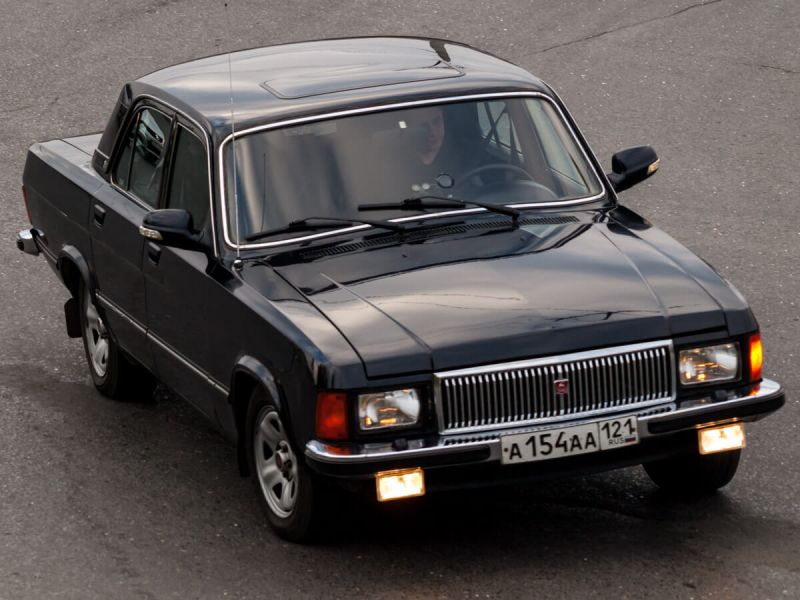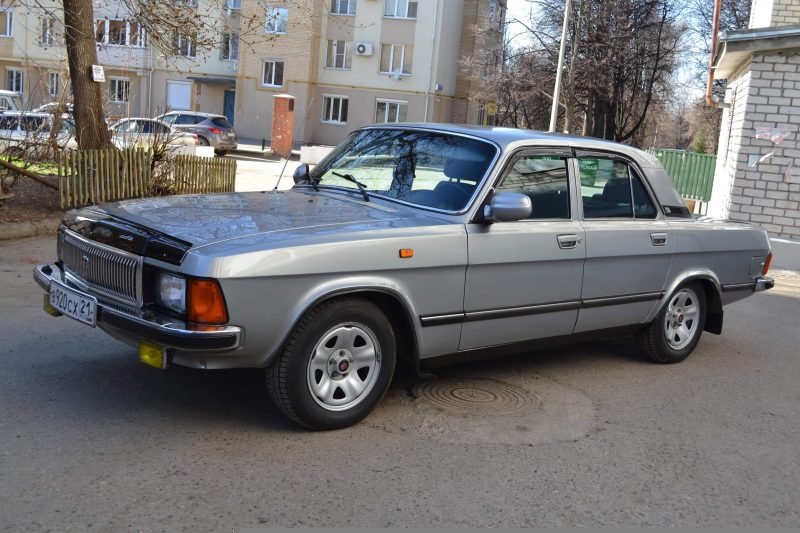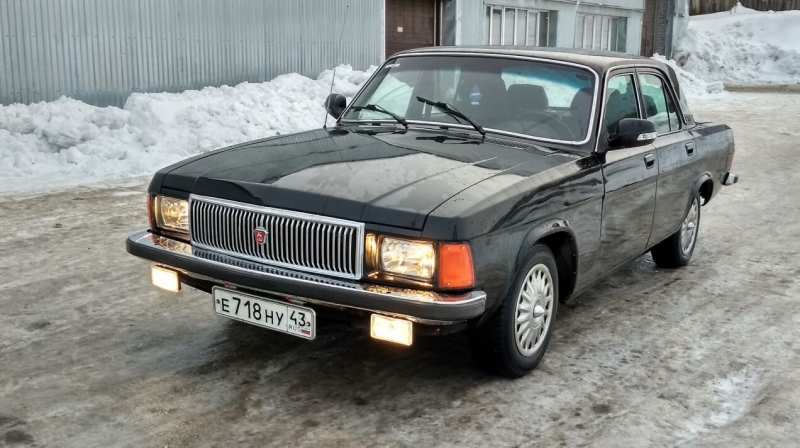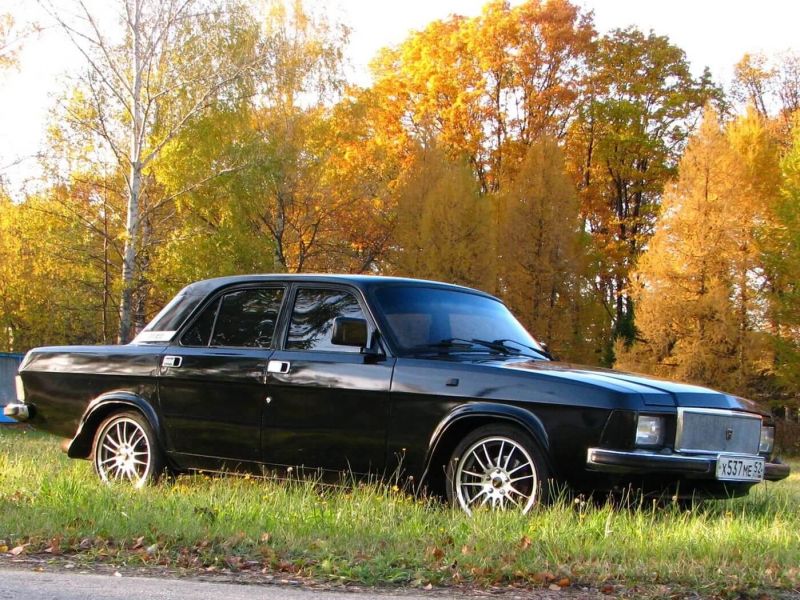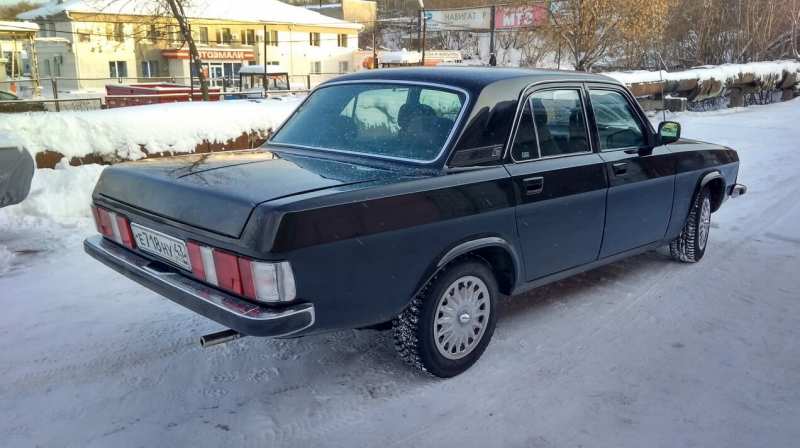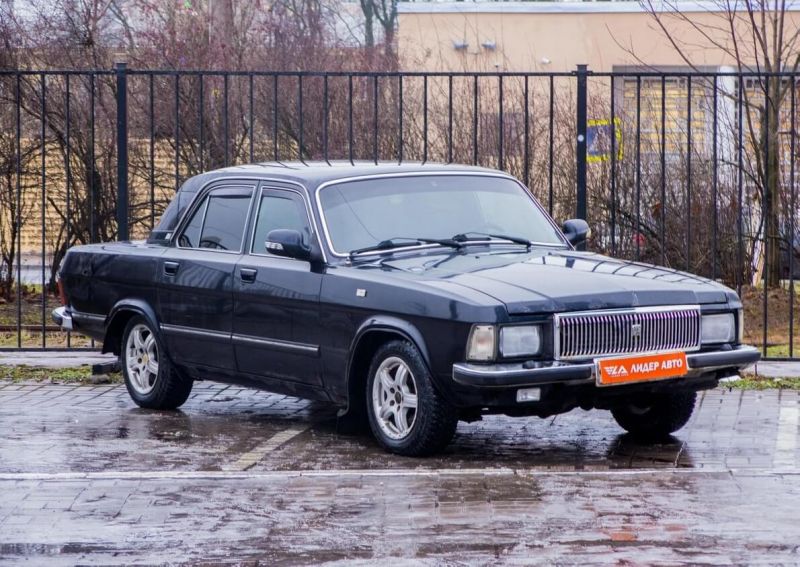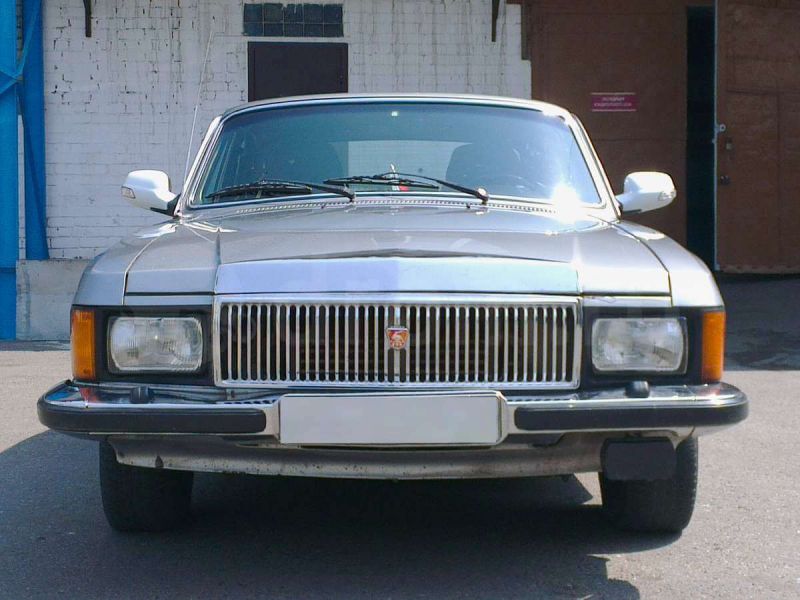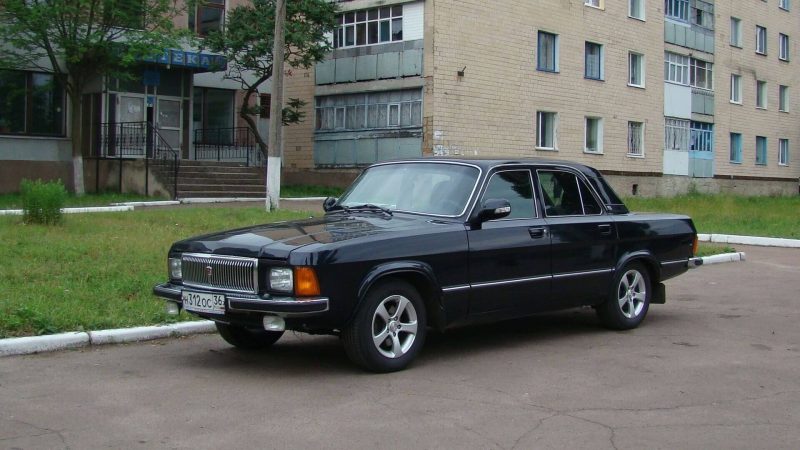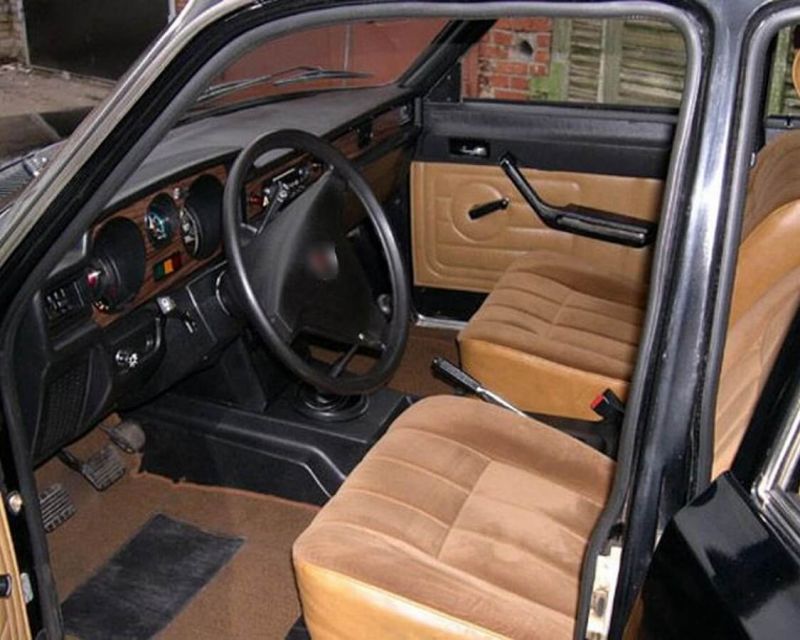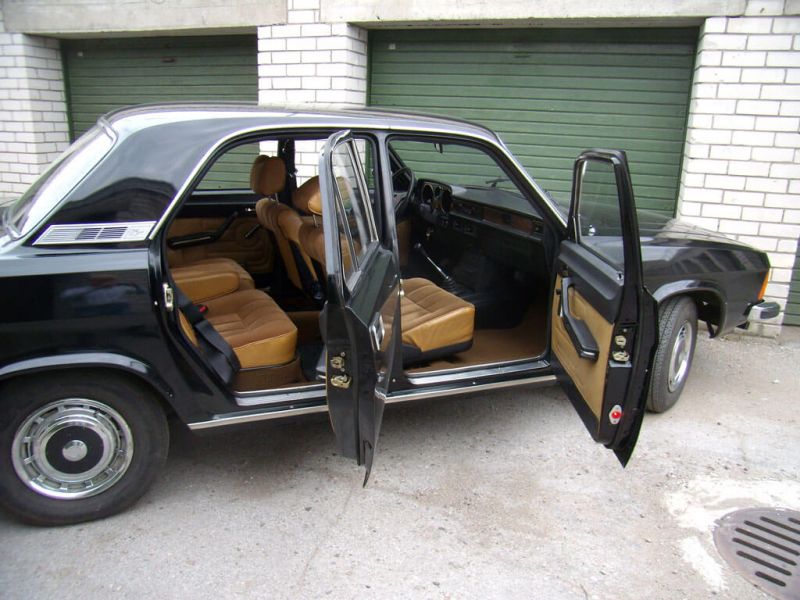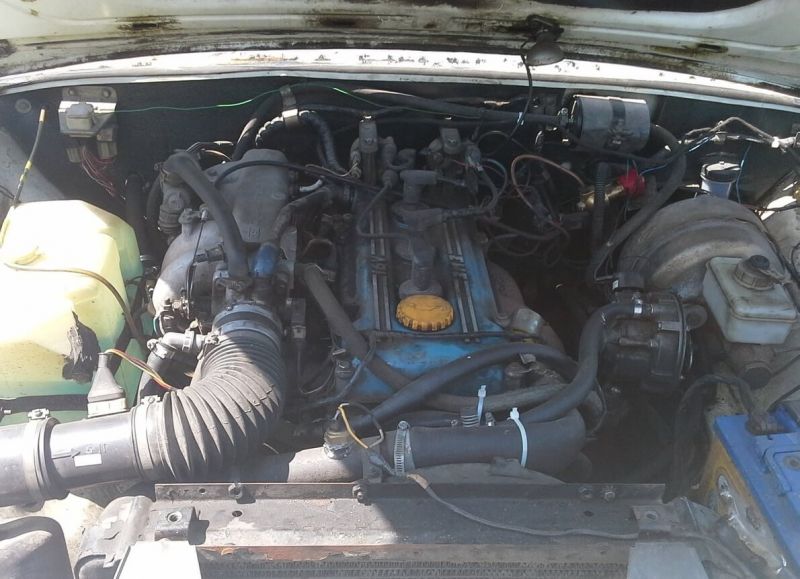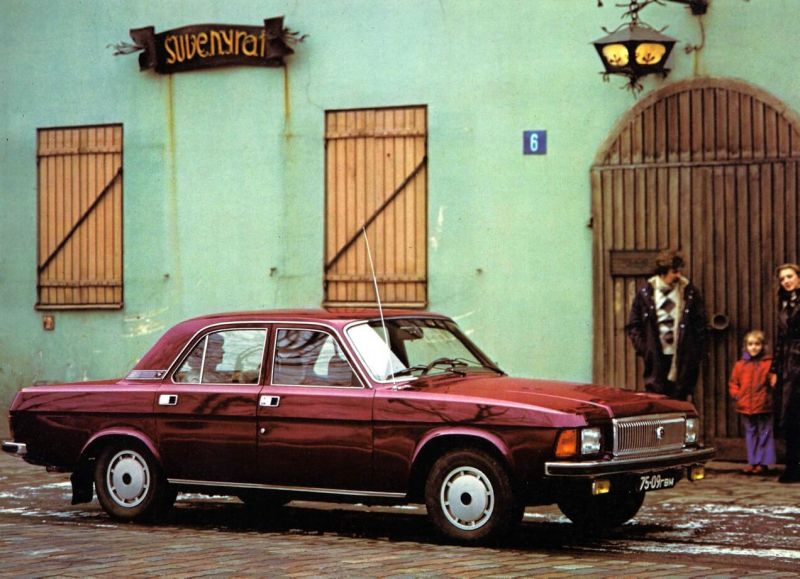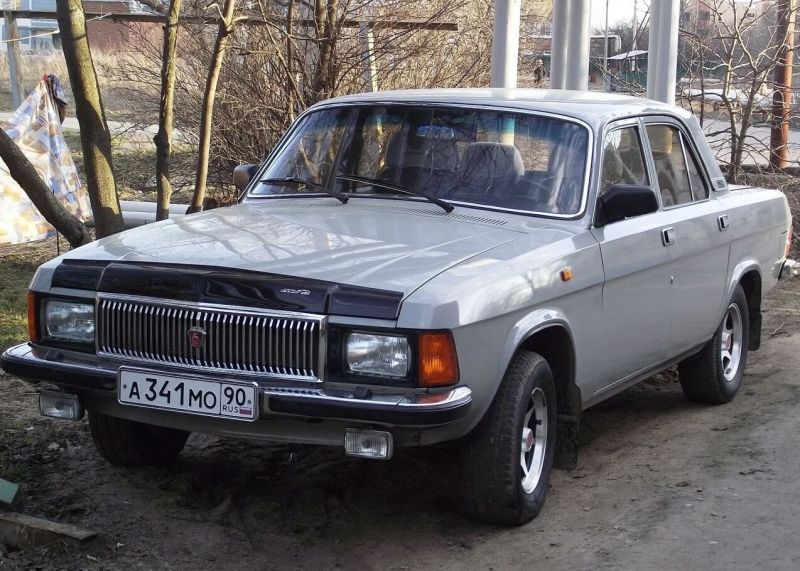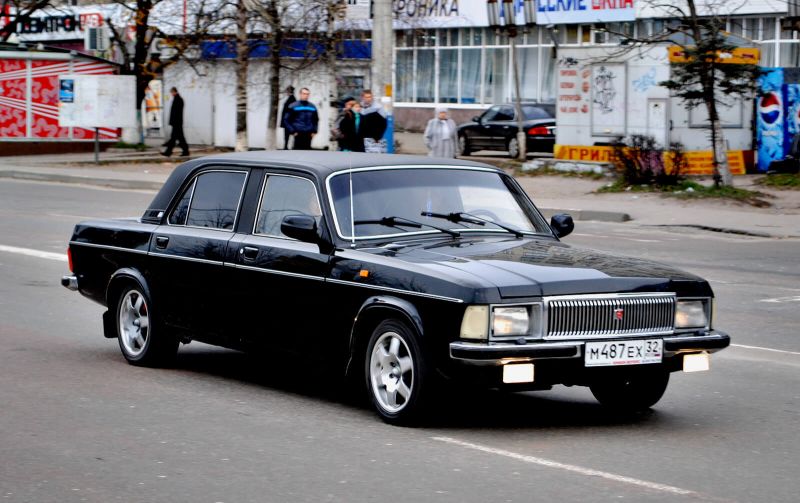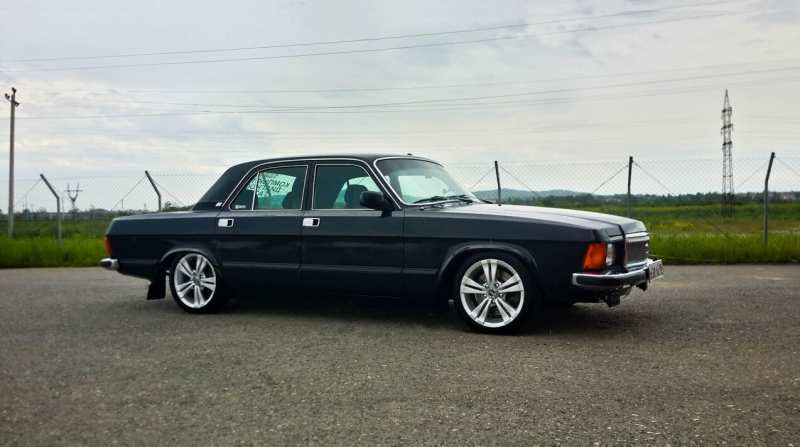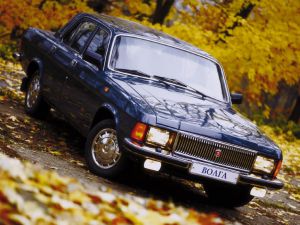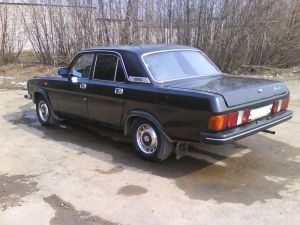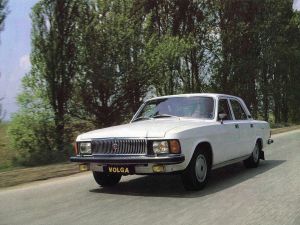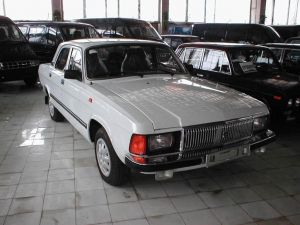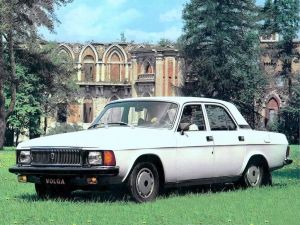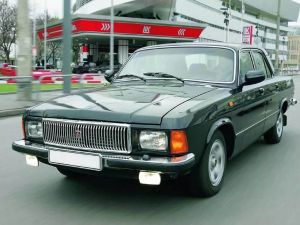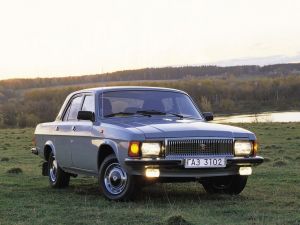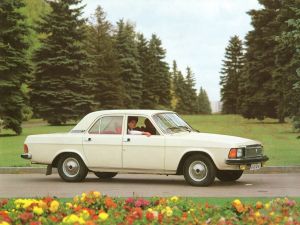Volga-3102
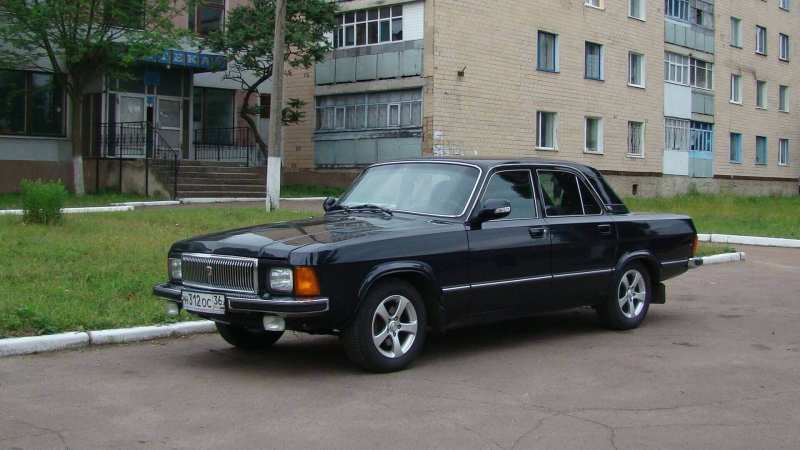
GAZ-3102 is a passenger car of the representative class, which was produced by Gorky Automobile Plant in serial order in the period from 1982 to 2008. The model served as the next generation of GAZ-24-10 and predecessor of Volga Siber.
The vehicle became a platform for GAZ-31029 generation vehicles and it was produced only in the sedan body. The hierarchy of representative vehicles of the Union of Soviet Socialist Republics allowed the vehicle to take the intermediate line between GAZ-14 Chaika and Volga GAZ-24-10. The whole model range is GAZ.
- Car history
- Exterior
- Interior
- Specifications
- Powertrain
- Transmission
- Suspension
- Steering wheel control
- Brake system
- Costs and upgrades
- First wave of modernization (1982-1991)
- Second wave of modernization (1992-1997)
- Third wave of modernization (1997-2003)
- Fourth wave of modernization (2003-2006)
- Fifth wave of modernization (2006-2009)
- The pros and cons
- Summing up
- GAS-3102 photo
- Video overview
During socialism, there was no such machine in the retail market; it served statesmen together with institutions and party leaders. Serial production of Volga GAZ 3102 continued with a large number of upgrades until 2009, after which it was discontinued.
Based on the last years of production, the vehicle was technically identical to GAZ-31105, but was able to retain its “standard” bodywork design in the classic style. In this article the technical characteristics and photos will be considered.
Car history
At the time of installation of the new 24th model into the conveyor production, the specialists of the Gorky Automobile Plant started to think about the future family – the car, which would be “bigger, better and more powerful”. But initially the next Volga was conceived not only as a replacement for the existing car (as it happened with the 21st), but also as a car, which could occupy an intermediate niche between standard products and piece limousines of the Gorkovsky plant, which used to be manually assembled.
In other words, taking into account the higher set of consumer qualities, the promising Sedan’s version had to be in mass production. The modernized car could help the company and the whole country to get a good income.
Because even in those days they began to pay attention not only to the overall component of the machine, but also to its equipment, the degree of finishing and functions, which were designed to improve the level of comfort. It should be noted that even the new GAZ-24 had not such a distinctive level of equipment, it was the same as the standard cars, which were the lower class.
And the “elite” cars of the Gorky Automobile Plant could boast of the options, which were standard for high-class foreign cars. These included hydraulic power steering, automatic transmission, electric window drives and air conditioning.
The transition vehicle was supposed to compensate for the gap in GAZ’s production list and at the same time become a powerful weapon of the company in the battle for external market consumers.
Sadly, it was decided to design the new sedan on the basis of the existing 24th model. The USSR Ministry of Automobile Industry has sustained some projects of essentially new cars, such as Moskvich, Izh and Zaporozhets. Instead, they gave preference to the establishment of the newest automobile giant in Togliatti. In addition, the design and start of serial production of the next car entailed the need for large sums of money, which have only recently been invested in the already appeared VAZ.
In addition, since 1973, the whole world has experienced a unique energy crisis, so a powerful medium-sized machine was simply unclaimed in European countries. It should not be forgotten that the 24th model was not an outdated sedan, which required serious improvements. Prototype versions got the name 3101. Like all new models of cars produced in the Soviet country in the 1970s, the 4-digit index of the promising model was in line with industry standards in 1966, where the 1st digit spoke about the class of the vehicle.
Due to strict technological limitations, the new machine was extremely connected with the previous model, in other words, the 24th model. In practice, they received “consent” only to the improvement of the nose and stern parts, but the power body structure, along with the roof stamps and door sidewalls, decided not to change.
Very interesting, but later many “essential” elements were left without improvements until the end of the production of the sedan in 2009. The prototype versions were retailed from the standard sedan appearance to the nose, stern and bodywork, where the number of chrome parts was increased.
However, taking into account all these moments, the conceptual version of the new sedan looked rather faceless, not far ahead of GAZ-24 on the external component. The heart of the new sedan was a V-shaped three-liter six-cylinder engine, which at first was planned to be installed in the “improved” modification of the 24th model, but they were not included in mass production.
1977 allowed to produce a new GAZ-14 Seagull, which significantly influenced the design of the vehicle under development. Experts decided to make the appearance of the following car in the same direction, moving away from smooth lines to a more pronounced “flat parallel” design direction. No matter how, and the gull, which had angular characteristics, looked quite solid, but was deprived of excess weight. It is worth noting that for the above reasons, experts on the exterior just could not walk around.
They could only change the nose and stern parts, while synchronizing them with the previous doors in a stylistic layout. However, too much to square the new details are not allowed that they did not enter into discord with the last middle bodywork. With the help of successful solutions of the design staff it turned out to be a small effort to change the appearance of the Volga, which gave it elegance and novelty. It is good that the photos of the first copies were preserved.
Exterior
GAZ-3101 had new headlamps, side body molding, other front wings and a hood. If we compare the model with the previous car, the novelty has been redesigned in a constructive way. For example, a lot of attention was paid to safety, noise isolation and environmental friendliness.
The interior was decided in the style of the “older” seagull. They also processed the transmission and provided a unique prechamber unit as a power unit. The lanterns installed at the back will be later transferred to the modification of GAZ-31029. The light-amplifying system was improved, which significantly increased safety.
In general, the appearance of GAZ-3102 was determined by three criteria: compliance with the world-class design solution, the safety of all stamped body parts of the 24th Volga, which could include the presence of spars, sides, luggage compartment lid, doors and roof. Also, the car had to meet the increased requirements of passive and active safety.
The exterior of the model was distinguished by the actual design solution, which combined the American power of body lines and the European shortness of body elements. The radiator grille had the style of a “whale mustache”, which indicated that the car belonged to the rank of “Volga”.
It is possible to notice it, having paid attention to a photo of a forward part of a sedan. Strict safety standards of 3102 served as the impetus for the introduction of shock energy absorption zones. This program allowed for some adjustments to the design, where the fuel tank was removed from under the floor and placed behind the rear seats above the rear axle, as this area is minimized by collision damage and collision impacts.
Due to the fact that there was another placement of the fuel tank, it provided an opportunity to increase the volume of the tank up to 70 liters. The bodywork of the car, following all the constructive changes, is now more modern, and the shape of the sedan began to wear a touch of aristocracy. The nose part of the car has lengthened on 202 millimetres that has raised stability to body deformation.
The car looked more balanced when viewed from the side. They began to install bumpers, radiator grilles, wheel covers and other chrome elements. The bumper was equipped with a rubber bezel, which protected it from deformation in case of small collisions. Door handles were mounted on a recessed type. Lost corner windows on the windows, which increased safety from theft, but slightly reduced the ventilation inside the vehicle.
The headlights were made in Germany by Ruhla, which had bulbs inside. Their location was lower than that of the 24th model, which made it possible to improve the illumination of the roadway. The bulbs could be replaced from the engine room. The engineers introduced a headlight washer system with nozzles, which were installed on the bumper. A fog lamp was added to the rear lights.
All turn signals “grew” in size and became visible from the side of the sedan, which made it possible not to use repeaters on the wings. The fog lights were placed under the front bumper. As a result, their effectiveness was improved. They could be covered with removable covers.
Interior
Salon sedan developed by the latest fashion of those times, the designers tried to provide the salon with an impression of luxury, but they held back their ambitions, so as not to jump over the line allowed. The stylistic side of the interior of a personal car of a Soviet official had to be responsible for the best foreign copies, but also to represent the Soviet automobile industry.
The 1970s imposed fashion on the interior decoration of natural wood, but while foreign car companies allowed themselves to have such luxury as a palisander panel, etc., the Soviet manufacturers have already considered such materials problematic.
Instead of natural wood, it was simply replaced by a self-adhesive film with a wood pattern. There was plenty of space inside the car. Three adults can sit comfortably on the back sofa. They have enough space above their heads and legs. The upholstery inside the sedan was made so that it was close to the standards of luxury. The armchairs together with the door panels were covered with quality velour. The shades could be different – red, green and beige. The backrests of the seats were orthopaedic in shape, so that the driver and passengers were not tired during the long journey.
Speaking of the floor, it was covered with a natural carpet, and this thing significantly increased the comfort of the interior and was a noise insulation layer. The heating system began to be combined with ventilation diffusers, and as before there were no machine air conditioners, the saloon of the exquisite sedan was provided with a cool air flow by means of a productive ventilation system.
The model differed from the prototype by the dashboard, which was made with the use of polyurethane foam. The steering column began to have light switches and direction indicators, which include control of shields and windshield washing. The rear mounted glass was electrically heated. There were also head restraints and, best of all, increased thermal insulation and reduced noise inside the sedan.
Specifications
Powertrain
The engine, which was installed on the new sedan in 1982, had an unusual design and went along with the prechamber and flare ignition, which functions in the mode of LAS-process (avalanche activation of combustion). The debut prechamber power units began to be produced in Gorky back in the 1950s while searching for the latest technologies that would provide fuel economy.
The method was not adopted, so soon it was decided to abandon it. ZMZ 4022.10 power units were then equipped with standard spark plugs. They were represented by four-cylinder single-row 102 hp engines with a volume of 2,445 liters.
They were giving away about 102 horsepower. The flammable mixture was ignited by flame torches, not sparks. An additional combustion chamber (prechamber) received the enriched mixture and was burned by a spark plug. The flame torches penetrated the main chamber through two nozzles and ignited the already existing depleted mixture.
The combustion was much faster and more complete than during the ignition of the spark. This increased the environmental performance of the exhaust system.
But the work on improving the sedan engine continued, because the difficult car consumed a lot of gasoline. The situation was resolved when in 1992 it was allowed to import Toyota 3RZ-FE engines, which were quite powerful and economical.
After 14 years, the Kharkiv team has already received Chrysler EDZ engines from America. Therefore, the machine was equipped with foreign engines. This practice was carried out for some time until the end of production. The carburetor was mounted outdated – K-156. A couple of chambers prepared a depleted mixture and one enriched one. The carburetor had a semi-automatic cold start system, the driver only had to close the air flap.
Among the drawbacks of this system were: frequent adjustment and cleaning of carburetor nozzles, release of large amounts of heat. In order to avoid overheating, it was necessary to change the HBC together with the cooling system. Another peculiarity of the power unit was the system of step-by-step start of the air, which provided it directly to the inlet manifold. Thanks to this, they received a double effect – to save fuel and reduce runaway during engine braking. At the end of production the plant received the American Chrysler DCC engine, which volume was 2.4 liters. It developed 150 horsepower.
Transmission
The gearbox for the representative sedan was selected gradually. Initially it was planned to install a planetary unit with the use of hydromechanical drive. But thanks to the sluggishness of the planned system of the Union of Soviet Socialist Republics, once again, the machine received an old transmission from the previous car, namely from the 24th model.
The gearbox needed to be modified, because the vehicle with an index of 3102 was in a different weight group and its weight required different ratios of gears of direct transmission. As a result, the car was equipped with an upgraded transmission, which had four mechanical speeds and was far from being perfect.
Suspension
Sedan walking at the debut stage of the structure was an automobile anachronism. Ahead of it was assembled by the method of rotary fists on kingpins, a similar scheme was used in those years on trucks. Such a suspension, of course, was reliable, but its components needed constant lubrication with different lubricants, such as “Litol”. For this purpose, the lubrication points had special grease nipples.
The front suspension had shock absorbers that had good reciprocating characteristics and were not afraid to withstand heavy loads. The front suspension was independent. The rear mounted suspension was simple and reliable. The body was based on semi-elliptic leaf springs and a stabilizing bar was used to ensure lateral stability.
Tank rubber bushings were pressed into the spring earrings. Therefore, silent interaction with moving parts was achieved. The rear suspension had hydraulic shock absorbers with oil shock absorbers. The rear suspension was dependent.
Steering wheel control
The steering wheel already had a hydraulic booster, which made it much easier to control such a large machine and to turn the steering wheel even during idle time.
Brake system
At GAZ-3102 it was more modern than its predecessor, all the elements were produced under license from the British company Girling. There was a dual-circuit hydraulic system and brake cylinders. All this work was carried out according to a complex, however, productive scheme of pressure drop in the collector of a functioning power unit.
The brakes were equipped with a hydro-vacuum booster. Therefore, a small push of the brake was enough to make the whole braking system work. The manual brake had a lever action and was installed on the rear wheels. The front wheels had disc brakes, and the rear wheels – already familiar – were drummed.
Costs and upgrades
Buying a GAZ 3102 car in the secondary market will not be difficult. The price starts at $837 and goes higher. The higher the price, the newer the car and its general condition is. The model has undergone 5 upgrades, which dealt with various aspects.
First wave of modernization (1982-1991)
Allows the machine to gradually change individual components and parts. Beginning in 1984, it began to install ventilated front brake discs. At the same time, they decided to replace the main brake cylinder and to simplify the distribution of hydraulic conduits. From the 85th year, some machines were equipped with ZMZ-402.10 engine. It had a block of cylinders from ZMZ-4022.10, but there was no prechamber.
We decided to move the registration plate to the bumper, which was stamped with a special pad. They combined the radiator grille, which became unitary. Repeaters of turns decided to return to the wings, because it was required by international requirements. Armrests on the doors were changed in the cabin.
Second wave of modernization (1992-1997)
They decided to put the fuel tank back in its original place (under the luggage compartment). It used to be above the rear axle, behind the rear seats. The exterior mirrors of the rear view began to have plastic bodies and handles to adjust the windows from the inside of the car. The spare wheel was attached to the luggage compartment floor. Place a float level sensor on the brake fluid tank lid.
Inside the sedan, the dashboard, pedal shape and manual transmission lever handle were changed. When 1994 came, they decided to abandon the prechamber motor. It was replaced by ZMZ-406. It was a 2.3-liter 130 hp power unit with 4 valves per cylinder and a chain drive for a couple of camshafts. The engine met the Euro-1 environmental standard.
Third wave of modernization (1997-2003)
During this period, the mechanical box already had five speeds. The intermediate support for the PTO shaft was returned and the installation of hydraulic power steering was started. The universal joint replaced the clutch on the steering wheel. The cooling system was equipped with an electric pump. Inside, the interior decoration was changed. An auxiliary resonator was installed. Changed the headlight wash settings.
The wheels were not 14, but 15 inches. Instead of iron caps plastic caps were used. The glass washer nozzles were moved to the hood and they were now heated. Also the noise insulation of the hood was renewed. When the year 1998 came, the inside of the car changed the door lining. The door ashtrays were removed and the presence of drawers was installed.
Fourth wave of modernization (2003-2006)
The front suspension was performed with ball bearings. Some changes were made to the manual gearbox. We started to put a stabilizer at the back of the gearbox. The wheels were changed and the caps were removed. The exterior mirrors were painted in the body color. All the cars were with rear axles, which looked like crankcase girders.
Fifth wave of modernization (2006-2009)
When 2006 came, the index of the car was changed (the number 5 was inserted), and the name of the car was changed to GAZ-31025 “Volga”. At this time, due to lack of power units ZMZ-4061, some trucks were equipped with ZMZ-405 (2.46 liters), which was developed for GAZ-3111. But there were few of them, so they started to use American Chrysler DCC 2.4L DOHC 2.429 liters, which corresponded to the European environmental standards Euro-2, or Euro-3, depending on what was the modification.
In addition, they changed the expansion tank, began to install electrical adjustment and heating of external mirrors. They also added a mechanism that regulated the steering column. Repeaters were no longer placed on the wings, they were placed on the outside mirrors. The dashboard was slightly updated. Some parts of the machines were updated in 2008. And at the end of this year “Volga” was no longer produced.
The pros and cons
Pluses cars
- Low price policy and easy interchangeability of spare parts and parts;
- Stylish appearance that can please the eye of style lovers even today;
- Good capacity of power units;
- Worthy height of road clearance;
- Presence of the big luggage compartment;
- Enough free space inside the car;
- Comfortable anatomic armchairs with headrests;
- Not bad dynamic characteristics;
- A soft suspension bracket which allows to swallow the majority of bumps and dents on road;
- There were five improvements to the machine;
- The car is not afraid of loads;
- Short turning radius for such a large sedan;
- Improved and informative dashboard;
- An unpretentious vehicle;
- Hydraulic power steering and braking system;
- Good ventilation system of the machine;
- Presence of a 5-speed manual gearbox;
- Improved braking system;
- High-quality lighting;
- Application of pre-deformed zones at impacts.
Cons of a car
- A big weight of the car;
- Massive dimensions of the Volga;
- Minimal settings of the steering column and seats;
- The big expense of fuel GAZ 3102;
- Insufficient visibility because of the long and large hood;
- Imitation of wooden inserts on a torpedo, whereas in foreign variants there was a real tree;
- No tachometer.
Summing up
The fact that GAZ-3102 was used at first only for officials and important persons, he developed a desire to buy this model from many car enthusiasts of that time. Its unusual appearance makes you look at the car even today, as to say about the years of its production. It is worth noting that the model has successfully replaced GAZ-24, which has already become “simple” in the USSR. The company has not changed its traditions in the installation of the famous “whale mustache”, which was a bit modest here.
Not only the appearance of the whale mustache has changed. Inside the car is much more comfortable is. There is a new dashboard that allows you to easily read the necessary information. The presence of a sticker imitating wood has already inspired and made the interior of the sedan more interesting and elegant.
I’d like to praise the designers, because they’ve done a great job. The car also had a lot of free space, so no one felt uncomfortable. The luggage compartment, familiar with the 24th model, was as big as the volume. It was still possible to place all the essentials and go even on a long trip.
The rims were later fitted with larger wheels, which made the appearance of the sedan even more stylish. Yes, there were many drawbacks and shortcomings, but the designers and designers tried to do better than they could. Do not forget that, unfortunately, they were not given complete freedom of action.
The power unit was powerful, but consumed a lot of gasoline, which remains a problem today. These models can be found quite often on the road. The Gorky Automobile Plant did not stop developing after the completion of production of this model.
Today, there are more advanced cars, which are far superior to GAZ-3102, but in its years of production 3102 was probably one of the most prestigious sedans in the Soviet market. Also today they even make tuning for GAZ 3102, which sometimes is not inferior to foreign models.
We advise you to read the article: Dream car: how Volga was hardened
GAZ – history of car production


